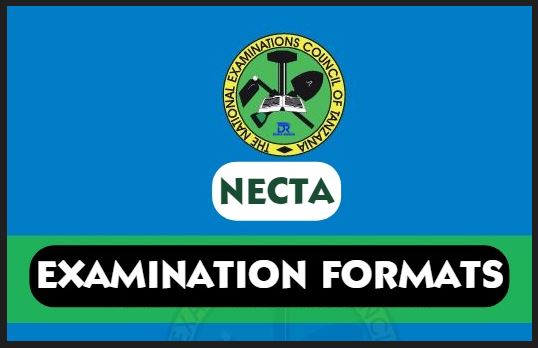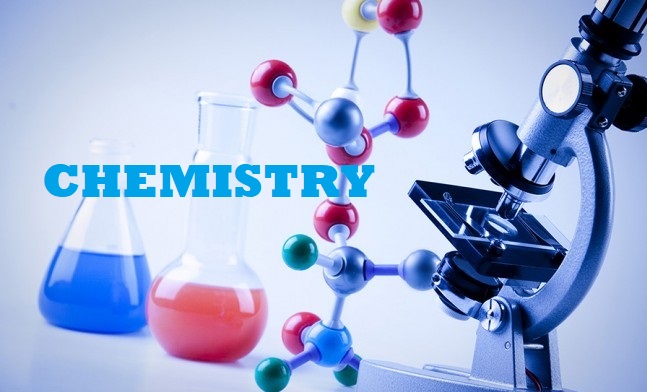TOPIC 3 : WATER QUESTIONS WITH ANSWERS ~ CHEMISTRY FORM 2
WATER
QUESTIONS
- Multiple choice.
Choose the most correct answer from the given alternatives.
(i) The system where water is being recycled
A: water movement.
B: water system
C: hydro-logical cycle
D: water treatment.
(ii) Formation of liquid water from ice is under the process known as ______
A: melting
B: condensation
C: evaporation
D: precipitation
(iii) _________ water generate hydro electric power.
A: cold B: moving C: hot D: atmospheric.
(iv) Usable water obtained after being _________
A: Purified
B: boiled
C: filtered
D:.treated
(v) One of the following is not physical properties of water.
A: it is colourless, odourless and tasteless
B: it is neither acidic nor basic.
C: it is a universal solvent
D: it freezes at 0°C and boils at 100°C
(vi) We get pure water after________
A: being boiled
B: removal of contaminants
C: being filtered
D: removing mud and dust.
TOPIC 3 : WATER QUESTIONS WITH ANSWERS ~ CHEMISTRY FORM 2
(vii) Which of the following statement about water is not true?
A: is used in industries as coolant
B: is used as raw material to produce hydrogen to produce carbon
C: is used as solvent
D: is used as raw material to produce hydrogen gas
(viii) The simplest way to purify water at home.
A: cooling
B: boiling
C: filtering
D: condensing
(ix) During precipitation, water falls in form of.
A: rain and clouds
B: rain, snow and hail
C: water ice
D: vapour
(x) The process of removing contaminants from water is called_________
A: water purification
B: sedimentation
C: electrolysis
D: contamination
TOPIC 3 : WATER QUESTIONS WITH ANSWERS ~ CHEMISTRY FORM 2
- Matching items.
Choose the correct response from list B that match with item in list A.
List A.
(i) liquid state of water
(ii) solid state of water
(iii) gaseous state of water
(iv) uses of water in agriculture
(v) combination of acidic gases and water vapour.
(vi) using untreated water
(vii) reaction of water and metals to form hydroxides and hydrogen gas.
(viii) Boiling
(ix) swimming
(x) cooling machine.
List B
A: chemical property of water.
B: simple domestic water treatment.
C: may cause eruption and spread of diseases
D: ice, snow and hail.
E: clouds, mist and steam.
F: dew and rain
G: use of water in recreation.
H: lead to occurrence of acidic rain.
I: irrigation.
J: industrial use of water.
- Why water is said to be a universal solvent?
- How can we test the presence of water in a substance?
- Define the following terms.
(i) water treatment
(ii) precipitation
(iii) evaporation
(iv) condensation
(v) water purification
(vi) solubility
(vii) melting
TOPIC 3 : WATER QUESTIONS WITH ANSWERS ~ CHEMISTRY FORM 2
- (a) Explain the methods of domestic treatment of water
(b) Explain the process of urban treatment of water
- List down uses of water.
- Differentiate water treatment from water purification.
- (a)What are the importance of treating water?
(b) What are the importance using treated water?
- Analyse physical properties and chemical properties of water.
- (a) define water cycle
(b) explain processes involved in a water cycle.
ANSWERS
- (i).Cvi) B
(ii) A vii) B
(iii) B viii) B
(iv) D ix) B
(v) B x) A
- (i) Fvi) C
(ii) D vii) A
(iii) E viii) B
(iv) I ix) G
(v) H x) J
TOPIC 3 : WATER QUESTIONS WITH ANSWERS ~ CHEMISTRY FORM 2
- Water is said to be a universal solvent because many substances dissolved in it if compared to other solvents.
- We can identify presence of water by using the following specific tests.
- i) Blue Cobalt chloride vapour.
-Water or its vapour will turn cobalt chloride paper from blue to pink.
- ii) Anhydrous copper(II) sulphate
Water or its vapour turns
anhydrous copper(II) sulfatecrystals from white to blue.
- (i) Water treatment
is a process of making unusable water into usable.
(ii) Precipitation
Is a process in which water fall to the earth in forms of rain, hail or snow.
(iii) Evaporation
Is a process where by the water vapour or steam leaves the streams, rivers, lakes or oceans into the air.
(iv) Condensation
Is a process in which water vapour in air get cold and change into liquid that form clouds.
(v) Water purification
is a process of removing contaminants from treated water.
(vi) Solubility
Is a tendency of substances (solutes) to dissolve to form solutions.
(vii) Melting
Is a process of changing from solid substance into liquid substance.
TOPIC 3 : WATER QUESTIONS WITH ANSWERS ~ CHEMISTRY FORM 2
- (a) methods of treating domestic water include the following
(i) Boiling.
Is a process of heating water and let it to boil at least five minutes before heating is stopped.
(ii) Use of purifiers.
Is a method of treating water where by chemical water purifiers are added in water.
Water purifiers are in forms of liquid or tablet.
(iii) Use of commercial filters.
Is a method of water treatment in which water pass through a charcoal or ceramic element that purifies water.
(b) the following summary explains Urban water treatment.
Tap water used in urban is usual obtained from sources such as rivers, stream and lakes
which are not treated. Processes for treatment of urban water are explained as follows
- Screening
- Reservoirs
iii. Primary filtration
- Secondary filtration
- Disinfection/chlorination
- Storage
- Screening
This process involves the removing of floats substance
- Reservoirs
This process involves the storing of water at high up so it flows through gravitation
- Primary filtration
This process involves
- Filtered water comes from reservoir
through coarse sand (filter medium) to remove particles
- Addition of aluminium sulphate to water comes from reservoir to remove smaller particles which was not filtered at coarse sand
- Secondary filtration
This process involves Filtered water comes from primary filtration through finer sand (filter medium) to remove smallest particles
- Disinfection/chlorination
This process involves put Disinfection to water comes from secondary filtration to kill harmful bacteria
- Storage
This process involves to store soft water (comes from Disinfection/chlorination) ready for use
- Uses of water.
-it used for drinking
-it used for cooling
-it used for cleaning.
For. Example environment
-it used for washing. Eg bodies
-it used to manufacture goods
For. Example food and chemicals
-it used for agriculture activities
For example irrigation.
-it used to generate hydro electric power.
-it used in construction. Eg. Roads
-it used as a solvent.
-it used in transportation.
- Water treatment is a process of making unusable water into usable.
While
Water purification is a process of removing contaminants from treated water.
There fore when treating water we get useful water but when purifying water we get pure water.
- The following are importance of water treatment.
(i) it helps to remove harmful bacterial and other parasites which may cause diseases.
(ii) it enables us to get efficient water for different uses. Eg cleaning
TOPIC 3 : WATER QUESTIONS WITH ANSWERS ~ CHEMISTRY FORM 2
(iii) it helps to get suitable water for manufacturing products which are safe for consuption.
(iv) it helps us to get water which is best for laboratory uses and medical facilities.
(b) Importance of using treated water.
(i) it helps to avoid infections and spread of diseases.
(ii) it provides correct result when performing experiments in the laboratory
(iii) it provides safe products for human consuptio when it is used in manufacturing industries.
(iv) it simplifies cleaning and maintains the quality cleaned substance.
- Physical properties of water
- It is colourless, odourless and tasteless
- Occurs natural in all state of mater
iii. It is universal solvent
- Freezing point is 0℃
- Its boiling point is 100℃
- It has high surface tension
vii. It has high specific heat index
viii. It expands when freezes thus why ice float
over water
- It is miscible with many liquids
Chemical properties of water
- Pure water is neutral (neither acidic nor
basic)
- Cold water react with some metals to
form hydroxide and liberate hydrogen gas
iii. Some metals react with steam to give
respective metal oxide and hydrogen gas
TOPIC 3 : WATER QUESTIONS WITH ANSWERS ~ CHEMISTRY FORM 2
11.
(b)Water Cycle stages
Water cycle is made up to four main stages which are
- Evaporation (include transpiration)
- Condensation
iii. Precipitation
iv.Collection
Evaporation (include transpiration)
Water from rivers, lakes, stream, sea, ponds etc evaporate to air.
Plants lose water in form of vapour by
transpiration while animal and human being lose water through respiration and sweating
Condensation
Water vapour obtained by evaporation,
transpiration, perspiration and sweating in the air gets cold and changes back into liquid to form clouds
Precipitation
Rain start when air fails to hold condensed
water and final results rain
Collection
Takes place when rain water back to the
ground which may run over the soil and
collected in the rivers, lakes, stream, sea, ponds where cycle stars all over again.



























































I really like and appreciate your blog.Thanks Again. Will read on…
I value the article.Much thanks again.
Really appreciate you sharing this post.Much thanks again. Will read on…
I am so grateful for your blog.Thanks Again. Much obliged.
Wow, great article post.Really looking forward to read more. Really Cool.
Thanks for the blog post.Really looking forward to read more.